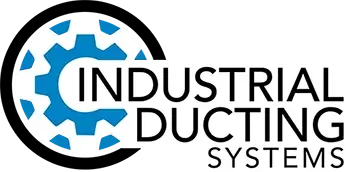Concrete & Cement Manufacturing Ducting Solutions
Concrete and cement production facilities, including precast batch plants, face some of the most demanding air quality challenges in industrial manufacturing. These operations generate significant quantities of respirable crystalline silica, one of the most strictly regulated airborne contaminants. The industry has undergone major changes following OSHA's updated silica standard, requiring comprehensive dust control systems throughout the production process.
Precast batch plants combine raw material handling, mixing, casting, and curing operations in integrated facilities. Each process stage generates different types and concentrations of airborne contaminants, from coarse aggregate dust during material handling to fine silica particles during cutting and finishing operations. The industry's emphasis on automation and efficiency has increased production volumes while requiring more sophisticated dust control systems.
Environmental concerns extend beyond worker safety to include fugitive emissions that can impact surrounding communities. Many facilities operate under strict air quality permits that limit total particulate emissions and require continuous monitoring and reporting.
Specific Air Quality Requirements & Regulations
The concrete and cement industry is heavily regulated under OSHA's respirable crystalline silica standard (29 CFR 1926.1153 and 1910.1053). When concentrations reach 25 micrograms per cubic meter, increased monitoring protocols are required, and at 50 micrograms per cubic meter, employers must implement engineering controls and respiratory protection measures.
National Ambient Air Quality Standards for particulate matter are set by EPA Clean Air Act regulations, which directly affect concrete production facilities. Many facilities operate under Title V air quality permits that strictly limit emissions and require sophisticated monitoring systems.
State regulations often impose additional requirements, particularly in non-attainment areas for particulate matter. California's South Coast Air Quality Management District (SCAQMD) Rule 403 exemplifies stringent fugitive dust controls that many facilities must meet.
Temperature considerations are significant in concrete production. Curing operations may require temperatures up to 200°F, while some specialized products require steam curing at higher temperatures. Ductwork must accommodate thermal expansion and may require insulation to prevent condensation.
Construction Process & System Design Considerations
Concrete production facilities require comprehensive dust control systems addressing multiple emission sources from raw material storage through finished product handling. The construction process must carefully sequence installation to maintain production continuity while ensuring worker safety during construction activities.
Primary dust collection systems typically feature large-diameter main trunks designed to handle massive air volumes. Material handling areas require specialized capture systems including bin vents, conveyor enclosures, and truck loading stations. Cutting and finishing operations demand high-velocity capture systems with flexible positioning capabilities.
Ductwork routing must accommodate the three-dimensional nature of concrete production, with elevated storage bins, multi-level production equipment, and overhead crane operations. Structural support systems must be designed for high wind loads and seismic considerations in many locations.
Abrasion resistance is critical throughout the system, requiring specialized materials and design features. Cleanout access must be provided at strategic locations to address inevitable dust accumulation. Explosion prevention measures may be required for certain dust types, particularly when organic materials are present.
Technical Specifications & Performance Requirements
Concrete production dust control systems handle enormous air volumes, typically 500,000 to 2,000,000 CFM for complete facilities. Individual capture points may require 10,000-50,000 CFM depending on the material handling rate and containment requirements.
Ductwork materials must withstand severe abrasion from high-velocity particulate matter. AR (abrasion-resistant) steel or rubber-lined steel is common for high-wear areas, while standard galvanized steel may be acceptable for lower-velocity applications. Stainless steel is required for certain chemical-resistant applications.
Static pressure requirements are substantial due to high-efficiency filtration needs. Ductwork must maintain structural integrity under high negative pressures while preventing air leakage that could compromise system performance.
Thermal expansion joints are essential for temperature-varying processes, and vibration isolation is required due to heavy equipment operation. Structural loads include not only ductwork weight but also accumulated dust loading that can be substantial in concrete production applications.
How Industrial Ducting Systems Delivers Solutions
Industrial Ducting Systems has extensive experience with the demanding requirements of concrete and cement production facilities. Our comprehensive approach begins with detailed facility assessment to identify all emission sources and develop integrated dust control strategies that meet both OSHA silica standards and environmental permit requirements.
Our 2D CAD design services provide precise system layouts that accommodate the complex, multi-level nature of concrete production facilities. We understand the critical importance of maintaining production continuity and design systems that can be installed with minimal operational disruption.
Our material expertise ensures proper selection of abrasion-resistant components for high-wear applications while optimizing costs for lower-intensity areas. We provide detailed quantity take-offs that account for the specialized materials and extra-heavy construction required for concrete production environments.
Our logistics coordination services address the unique challenges of concrete production scheduling, ensuring that ductwork installation aligns with production shutdowns and maintenance windows. We understand that concrete producers often operate under tight delivery schedules and provide flexible installation approaches to meet your operational requirements.
Experience the Industrial Ducting Systems Advantage
Massive air volumes, abrasion-resistant design, silica standard compliance—discover why concrete producers trust us with their most challenging dust control requirements. Let's design a system that exceeds your expectations.
